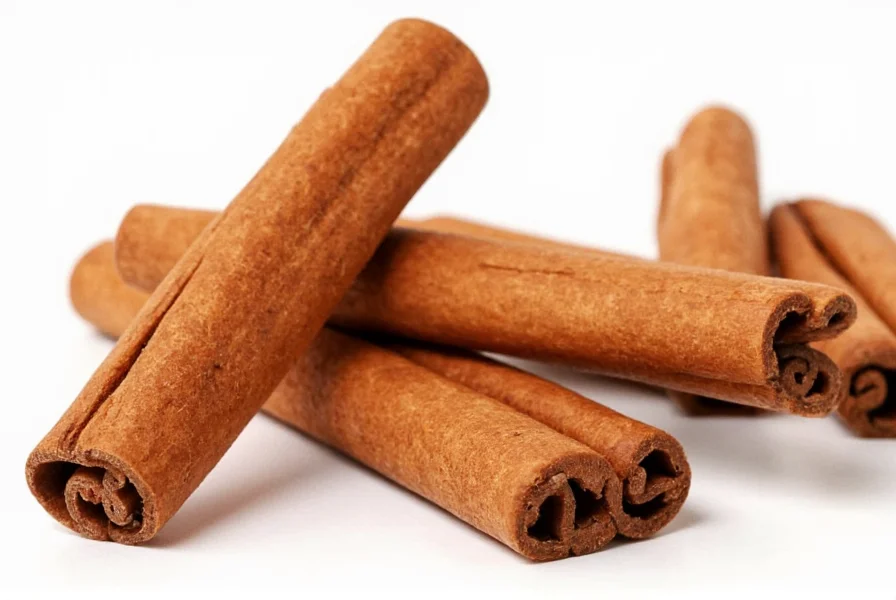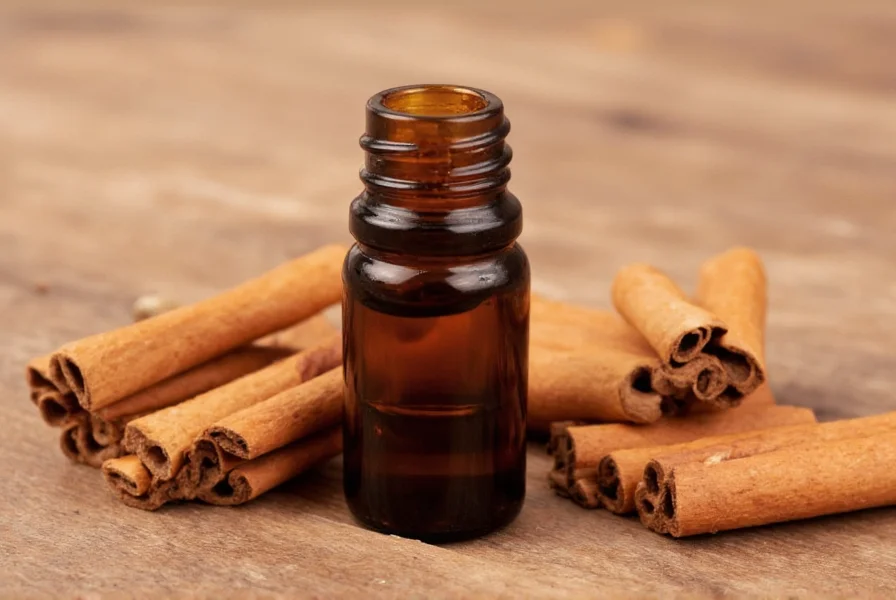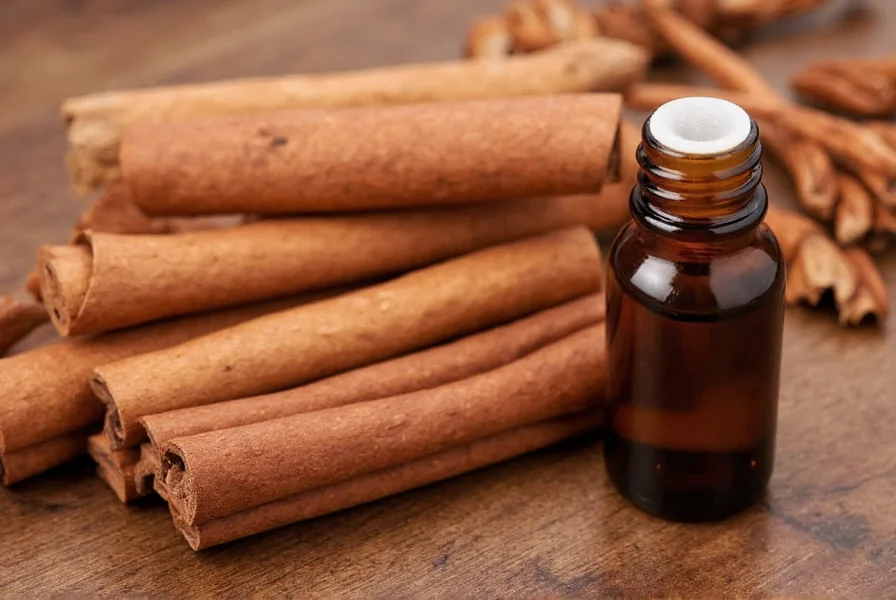Cinnamon essential oil stands as one of nature's most potent botanical extracts, capturing interest for both its aromatic properties and potential wellness applications. This comprehensive guide explores the science-backed information you need to use this powerful oil safely and effectively.
Understanding Cinnamon Essential Oil Production
Cinnamon essential oil comes in two primary varieties: bark oil and leaf oil. The bark oil, extracted from Cinnamomum verum (Ceylon cinnamon) or Cinnamomum cassia (Cassia cinnamon), contains higher concentrations of cinnamaldehyde (50-90%), giving it that characteristic spicy scent and stronger biological activity. Leaf oil contains less cinnamaldehyde but more eugenol, making it milder for topical applications.

Chemical Composition and Properties
The distinctive properties of cinnamon essential oil stem from its complex chemical profile. Cinnamaldehyde dominates the composition (especially in bark oil), while eugenol, linalool, and cinnamyl acetate contribute to its overall effect profile. Research published in the Journal of Agricultural and Food Chemistry confirms its significant antioxidant capacity, though human studies remain limited compared to laboratory research.
| Oil Type | Primary Compound | Concentration | Skin Sensitivity |
|---|---|---|---|
| Cinnamon Bark Oil | Cinnamaldehyde | 60-90% | High (requires 1% dilution) |
| Cinnamon Leaf Oil | Eugenol | 70-85% | Moderate (2% dilution) |
Evidence-Based Applications of Cinnamon Essential Oil
When considering cinnamon essential oil benefits, scientific evidence supports certain applications while others remain anecdotal. Laboratory studies demonstrate promising antimicrobial properties against various bacteria and fungi. A 2020 review in Phytotherapy Research noted its effectiveness against foodborne pathogens, though these findings don't directly translate to human therapeutic use.
For cinnamon essential oil diffuser recipes, combine 2-3 drops with complementary oils like orange or clove for a warming aromatic experience during colder months. This application represents one of the safest methods for experiencing cinnamon oil's fragrance without direct skin contact.
Critical Safety Guidelines for Cinnamon Essential Oil
Understanding proper cinnamon essential oil dilution ratio proves crucial for safe usage. The Tisserand Institute recommends:
- Maximum 0.5% dilution for facial products
- 1-2% dilution for body applications
- Never apply undiluted to skin
- Perform patch test 24 hours before full application
Cinnamon essential oil precautions include avoiding use with children under 6, during pregnancy, or if you have sensitive skin conditions. Its high phenol content can cause severe skin irritation, burns, or allergic reactions in some individuals. The oil's potency means even brief exposure to undiluted oil can damage skin tissue.
Selecting Quality Cinnamon Essential Oil
When choosing cinnamon bark oil vs cinnamon leaf oil, consider your intended use. Bark oil offers stronger antimicrobial properties but requires more careful dilution. Leaf oil provides a gentler alternative suitable for those with more sensitive skin.
Look for these quality indicators:
- GC/MS testing reports available from the supplier
- Botanical name specification (Cinnamomum verum or Cassia)
- Dark glass packaging to protect from light degradation
- No added carriers or synthetic ingredients
Practical Application Methods
For how to use cinnamon essential oil safely in household cleaning, try this simple recipe:
- Mix 10 drops cinnamon oil with 1 cup water in a spray bottle
- Add ¼ cup white vinegar for enhanced cleaning power
- Shake well before each use
- Test on inconspicuous area first
For aromatic use only, create a seasonal diffuser blend with 2 drops cinnamon, 3 drops orange, and 1 drop clove in your diffuser. This cinnamon essential oil diffuser recipe creates a warm, inviting atmosphere without direct skin contact risks.

Realistic Expectations for Cinnamon Essential Oil
While cinnamon essential oil for skin applications appears in many DIY beauty recipes, exercise extreme caution. Its high irritation potential makes it unsuitable for most facial applications. For foot care, a properly diluted blend (1% in carrier oil) may provide temporary warming sensation, but never use on broken skin.
Current research doesn't support internal use of cinnamon essential oil for blood sugar management or other health conditions. The concentration of compounds in essential oil form differs significantly from culinary cinnamon powder used in dietary studies. Cinnamon essential oil safety requires understanding these important distinctions.
Conclusion: Responsible Use of a Potent Botanical
Cinnamon essential oil represents a powerful natural compound that demands respect and proper handling. When used correctly with appropriate dilution and safety precautions, it can contribute to aromatic experiences and limited topical applications. Always prioritize safety over anecdotal claims, and consult qualified professionals when considering therapeutic applications. The most effective cinnamon essential oil uses focus on its aromatic properties rather than medicinal claims unsupported by current research.
Frequently Asked Questions
Can I use cinnamon essential oil directly on my skin?
No, never apply undiluted cinnamon essential oil directly to skin. Its high cinnamaldehyde content causes severe irritation and potential chemical burns. Always dilute to 0.5-2% in a carrier oil before topical application, and perform a patch test 24 hours in advance.
What's the difference between cinnamon bark oil and cinnamon leaf oil?
Cinnamon bark oil contains 60-90% cinnamaldehyde, making it more potent but also more irritating to skin. Cinnamon leaf oil contains 70-85% eugenol, resulting in a milder oil with less skin sensitivity risk. Choose bark oil for stronger antimicrobial properties (with proper dilution) and leaf oil for more sensitive applications.
Is cinnamon essential oil safe to ingest?
No, cinnamon essential oil should not be ingested without supervision from a qualified healthcare professional. The concentrated compounds can cause serious internal irritation, liver toxicity, and other adverse effects. Culinary cinnamon powder differs significantly from the highly concentrated essential oil.
How should I store cinnamon essential oil to maintain quality?
Store cinnamon essential oil in its original dark glass bottle in a cool, dark place away from heat and sunlight. Properly stored, it maintains quality for 1-2 years. Keep the cap tightly sealed to prevent oxidation, which degrades the oil's chemical composition and increases skin irritation potential.
Can I use cinnamon essential oil around pets?
Exercise extreme caution with cinnamon essential oil around pets, especially cats. Many essential oils toxic to animals, and cinnamon's potency makes it particularly risky. Avoid diffusing around pets and never apply to animal fur or skin. Consult a veterinarian before using any essential oils in environments with pets.











 浙公网安备
33010002000092号
浙公网安备
33010002000092号 浙B2-20120091-4
浙B2-20120091-4